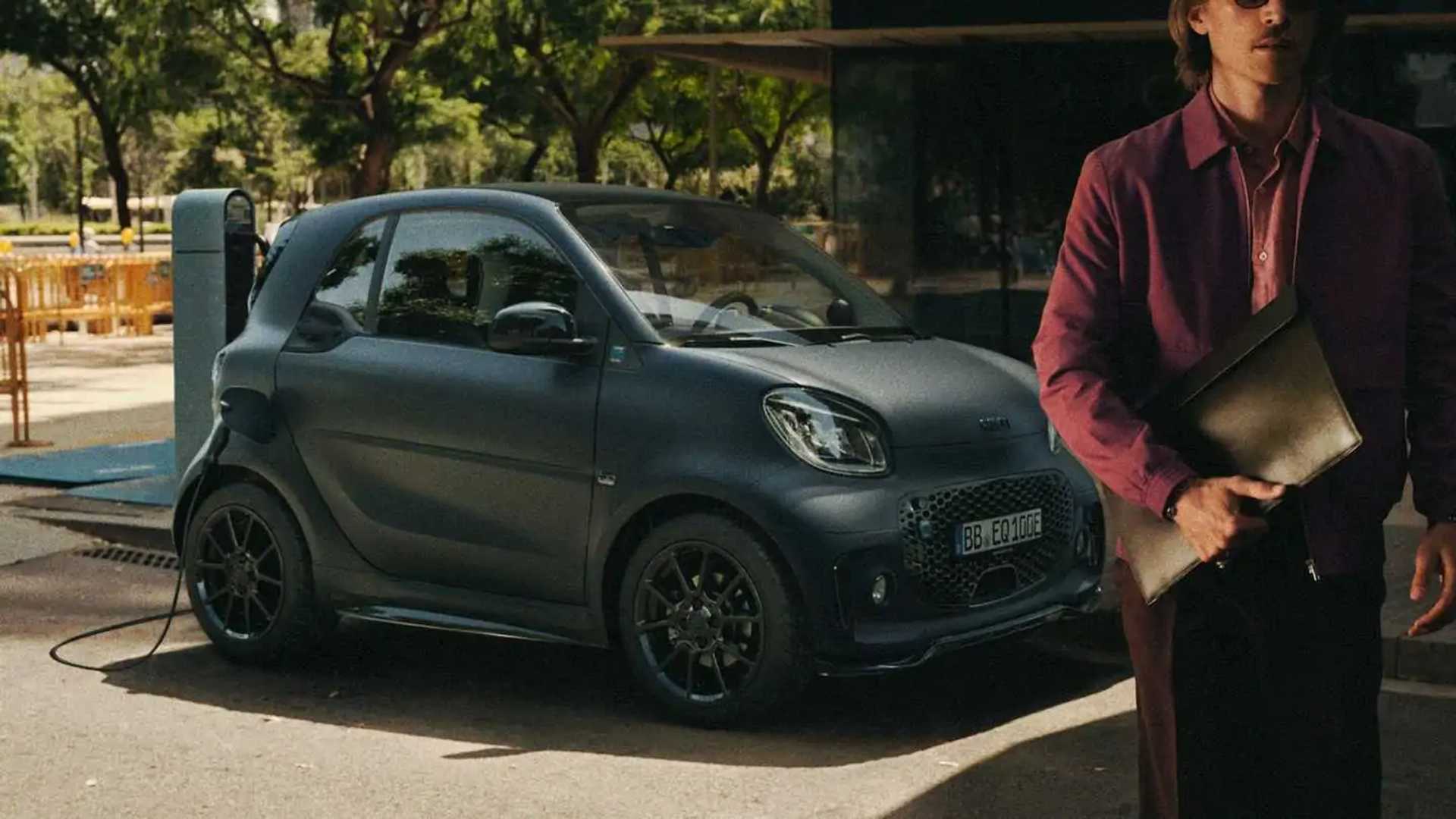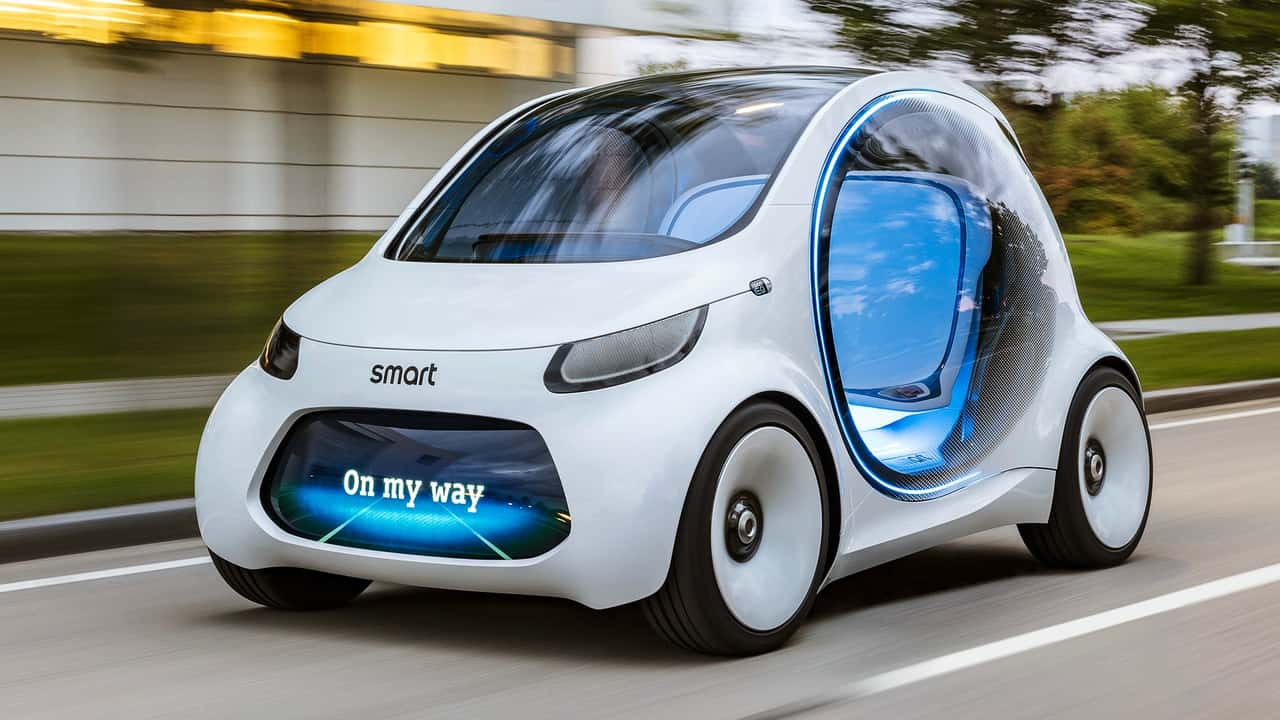Smart became synonymous with tiny but well-engineered city cars, and its most iconic model is what became known as the ForTwo. Three generations and 26 years of continuous production since the ForTwo’s debut in 1998, and Smart pulled the plug on the model in 2024, but it is looking to eventually launch a replacement.
Smart changed its focus after it became a 50/50 joint venture between its original owner, Mercedes-Benz, and China’s Geely in 2019. Now the goal is to take the brand upmarket and make larger and more expensive models like the #1, #3 and #5 electric crossovers, and there doesn’t seem to be as big a business case for tiny city two-seaters like the Fortwo.
Get Fully Charged
The Smart Fortwo may return, but probably not to the US
Smart sold the Fortwo in the US until 2019 when sales of the model had fallen to a few hundred units. Even if Smart revives the model, we don’t think it will be brought back to the US where buyers seem to prefer larger vehicles even for urban driving.
However, there is a reason why Smart is skipping the #2 name for now: it will be used in a future revival of the Fortwo (pictured). Autocar talked to Smart Europe CEO Dirk Adelmann, who revealed the company’s intention to bring back the pint-sized two-seater but stopped short of confirming its arrival.
Adelmann said, “We are working on that one. The run-out of the current Fortwo was two months ago, now. It would have been great to have a direct successor – we don’t, but we’re working on it.” He went on to explain that Smart doesn’t believe there’s enough demand to justify the company investing in a platform that it would only use for this one model.
Gallery: Smart ForTwo EQ Edition Bluedawn








This kind of vehicle would only really be popular in Europe, but even if it’s a relatively big market, it still wouldn’t generate enough demand for Smart to do it alone. He noted that “the best year for Fortwo was around 100,000 units, and that’s not enough to justify a platform,” concluding that “if you share this platform with partners—we’re still in evaluation—then you can also share the investment costs and the production site etcetera, and it starts making sense. We want to have a positive business case for us, for our retailers and in the end for our customers.”
All new models revealed under Geely’s part-ownership have been built atop the Chinese company’s SEA (Sustainable Experience Architecture) platform, which has multiple variants and is used in Volvo, Polestar, Zeekr and even Lotus EVs like the new Emeya that we recently drove. The latter employs the most feature-packed version of the platform, which is called Electric Premium Architecture (EPA), but it’s also known as SEA-P (where the P stands for Premium).
Geely doesn’t have a version of the SEA platform that would be a suitable fit for a Smart Fortwo-sized vehicle, so it’s looking for a partner to supply one. To stay true to the spirit of the original Fortwo, the new one would have to be rear-wheel drive, but there are currently no rear-wheel drive EV platforms for vehicles this small.
Launching a Fortwo successor isn’t a priority for Smart right now, as it is looking to bolster its lineup with crossovers that are much bigger and more expensive than any previous vehicle to wear the Smart badge. The manufacturer uses odd numbers for crossovers, while even numbers are reserved for coupe-like crossovers and other non-crossover models like the city car.
Smart, the German automotive brand known for its compact cars, is currently considering replacing its Electric Fortwo model with a new electric vehicle. However, the company has stated that it will not undertake this endeavor alone.
Smart, a subsidiary of Mercedes-Benz, has been producing the Electric Fortwo since 2007. The model has gained popularity for its small size, eco-friendly design, and ease of maneuverability in urban settings. With the growing demand for electric vehicles, Smart is now looking to update its electric offerings to stay competitive in the market.
While Smart is considering developing a new electric vehicle to replace the Electric Fortwo, the company has announced that it will not be going it alone. Smart is currently in talks with other manufacturers to form a partnership to co-develop and produce the new electric vehicle. This move is in line with the automotive industry trend of collaboration and partnership to share resources and technology in order to reduce costs and accelerate innovation.
By partnering with other manufacturers, Smart aims to leverage the expertise and resources of multiple companies to create a high-quality, efficient, and cost-effective electric vehicle. This collaborative approach will also allow Smart to benefit from the knowledge and experience of its partners in the development and production of electric vehicles.
In addition to co-development with other manufacturers, Smart is also looking to expand its electric vehicle lineup with additional models. The company has stated that it is exploring opportunities to offer a range of electric vehicles to cater to different customer preferences and needs.
Overall, Smart’s decision to replace the Electric Fortwo with a new electric vehicle demonstrates the company’s commitment to staying at the forefront of electric vehicle technology. By seeking partnerships and expanding its electric vehicle lineup, Smart is positioning itself for future growth and success in the rapidly evolving automotive market.

